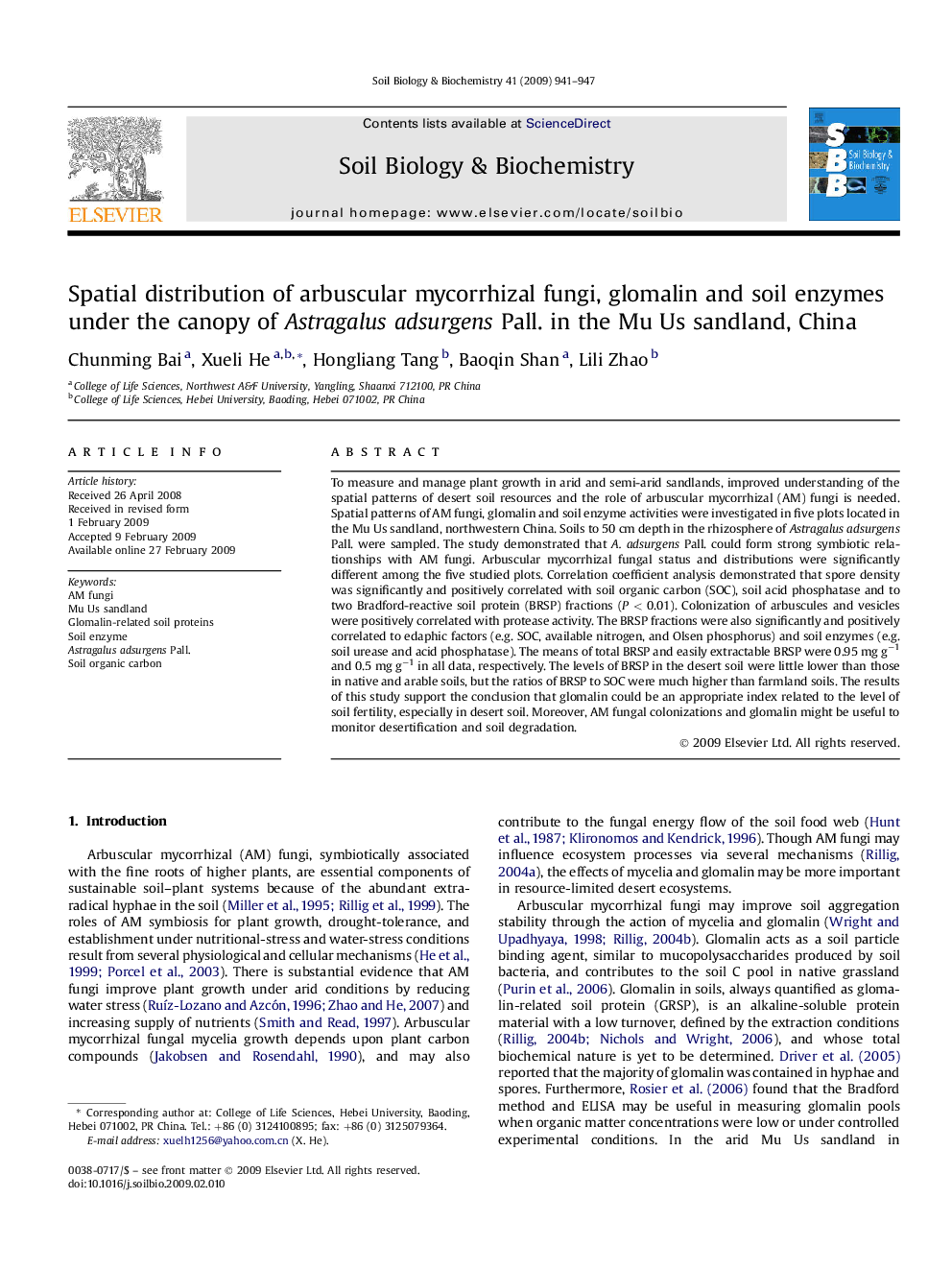| Article ID | Journal | Published Year | Pages | File Type |
|---|---|---|---|---|
| 2025758 | Soil Biology and Biochemistry | 2009 | 7 Pages |
To measure and manage plant growth in arid and semi-arid sandlands, improved understanding of the spatial patterns of desert soil resources and the role of arbuscular mycorrhizal (AM) fungi is needed. Spatial patterns of AM fungi, glomalin and soil enzyme activities were investigated in five plots located in the Mu Us sandland, northwestern China. Soils to 50 cm depth in the rhizosphere of Astragalus adsurgens Pall. were sampled. The study demonstrated that A. adsurgens Pall. could form strong symbiotic relationships with AM fungi. Arbuscular mycorrhizal fungal status and distributions were significantly different among the five studied plots. Correlation coefficient analysis demonstrated that spore density was significantly and positively correlated with soil organic carbon (SOC), soil acid phosphatase and to two Bradford-reactive soil protein (BRSP) fractions (P < 0.01). Colonization of arbuscules and vesicles were positively correlated with protease activity. The BRSP fractions were also significantly and positively correlated to edaphic factors (e.g. SOC, available nitrogen, and Olsen phosphorus) and soil enzymes (e.g. soil urease and acid phosphatase). The means of total BRSP and easily extractable BRSP were 0.95 mg g−1 and 0.5 mg g−1 in all data, respectively. The levels of BRSP in the desert soil were little lower than those in native and arable soils, but the ratios of BRSP to SOC were much higher than farmland soils. The results of this study support the conclusion that glomalin could be an appropriate index related to the level of soil fertility, especially in desert soil. Moreover, AM fungal colonizations and glomalin might be useful to monitor desertification and soil degradation.
